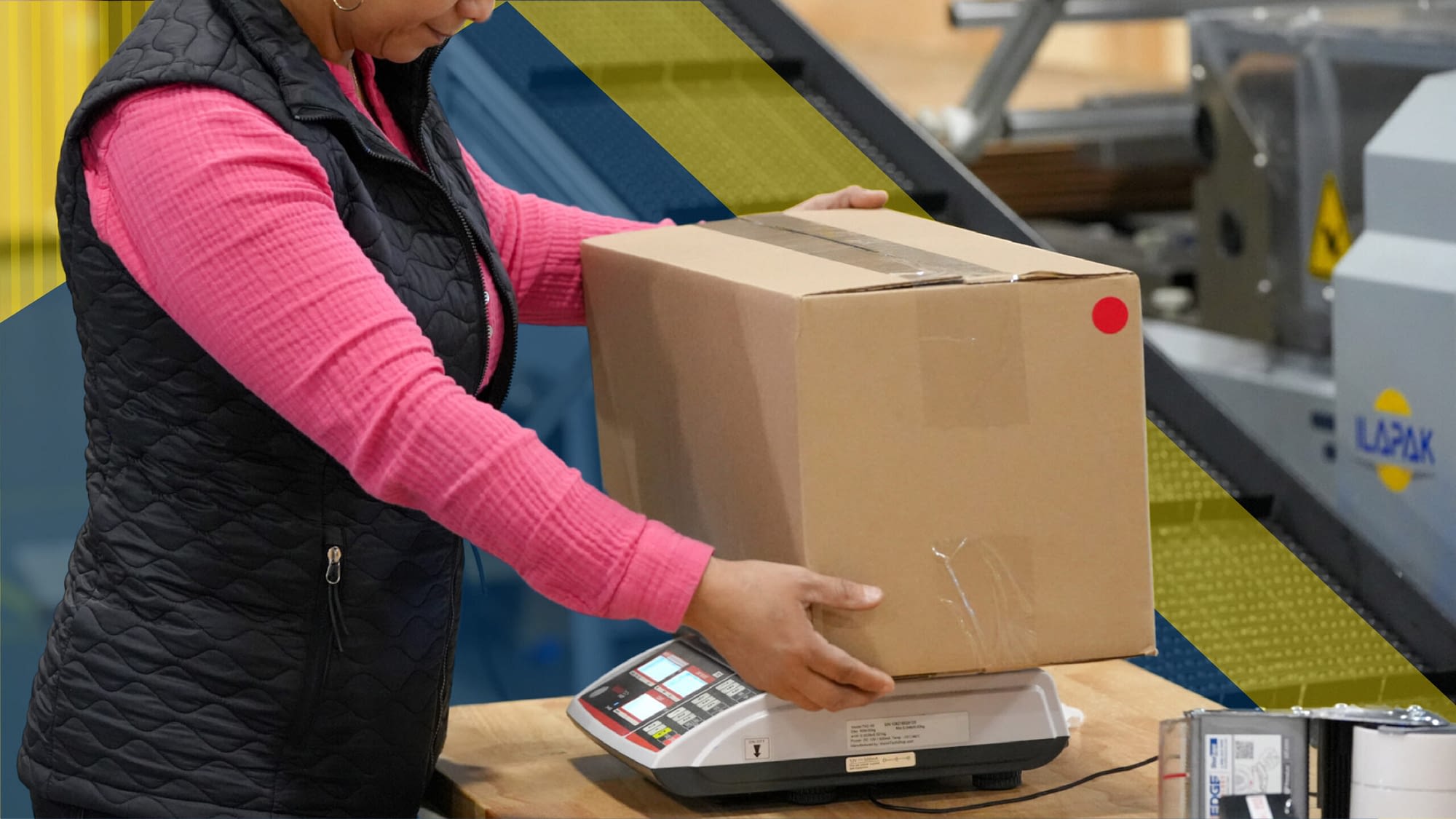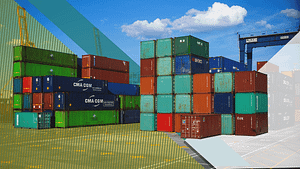When determining the pricing for a shipment, one of the major considerations is dimensional (DIM) weight. Whether you’re handling shipping logistics independently or passing the task to a third-party provider, grasping this concept is crucial for getting a fair price. However, DIM weight isn’t just a calculation of physical weight; it adds complexity to calculating the final shipping cost. In this article, we will provide insight into dimensional weight, how to calculate it, and how it relates to cost savings.
What Is DIM Weight?
Dimensional weight (also known as DIM weight or volumetric weight) is a pricing technique used in shipping and freight services. It’s a method to account for the space a package occupies in relation to its actual weight. Dimensional weight is calculated by multiplying the package’s volume (in inches) and then dividing by a dimensional factor (DIM Factor), typically provided by the carrier. This DIM factor represents the amount of space one unit of weight occupies in the carrier’s transportation network.
Dimensional Weight Formula
DIM weight ensures that carriers are fairly compensated for the space that large lightweight packages take up in their vehicles and planes. It also incentivizes shippers to pack their goods efficiently to minimize wasted space.
Steps To Calculating DIM Weight
To calculate dimensional weight, follow these steps:
- Measure the Package and Calculate Volume: Measure the length, width, and height of the package in inches. Make sure to measure the outermost dimensions of the package. Then multiply those dimensions together to get the volume
- Find the Carrier’s Dimensional Factor: Obtain the dimensional factor provided by the carrier you’re using for shipping. This factor represents the amount of space one unit of weight occupies in the carrier’s transportation network.
- Calculate the Dimensional Weight: Divide the volume of the package by the carrier’s dimensional factor to determine the dimensional weight.
- Compare Actual Weight and Dimensional Weight: Compare the dimensional weight obtained in Step 4 with the actual weight of the package. The carrier will charge based on whichever weight is greater.
DIM Weight vs Actual Weight
The primary difference between dimensional weight and actual weight is how you calculate the final weight:
Actual Weight: As you might expect, actual weight is simply the physical weight of your package that you get by weighing it on a scale.
Dimensional Weight: As we’ve learned previously, DIM weight is a theoretical weight that is based on how much space a package takes up during shipping.
As we now know, carriers will compare the actual weight of the package to its dimensional weight, and they will charge you based on whichever is greater. This means that if you have a large but lightweight package, you might end up paying for the space it occupies rather than its actual weight, which could be significantly less.
What Factors Determine DIM Weight?
Several factors determine DIM weight, including:
- Package Dimensions: The length, width, and height of the package are crucial factors in calculating dimensional weight. Larger dimensions result in higher dimensional weight.
- Carrier’s Dimensional Factor: Each carrier has its own dimensional factor, which represents the amount of space one unit of weight occupies in its transportation network. This factor is provided by the carrier and is used in the DIM weight calculation formula.
- Packing Efficiency: How efficiently the items are packed within the package also affects DIM weight. Poorly packed items that result in wasted space can lead to higher dimensional weight.
- Void Fill & Dunnage: Void fill & dunnage relate closely to packing efficiency. Stuffing a box full of packing material that is unnecessary can lead to you paying for more space than necessary. You should find the right materials that will protect your products and only pack the box with exactly how much you need.
- Destination and Shipping Method: Some carriers may apply different dimensional factors or rules depending on the destination and shipping method.
What is Void Fill?
Void fill, which is also referred to as packing material or packing filler, are the materials used to fill empty spaces or voids in packaging to protect the contents during shipping and handling. The primary purpose of void fill is to prevent items from shifting, rattling, or being damaged while in transit. Common types of void fill materials include:
- Bubble Wrap: Bubble wrap consists of plastic sheets with air-filled bubbles providing cushioning and protection against impacts.
- Packing Peanuts: Packing peanuts are small, lightweight foam pieces that fill empty spaces in packages, helping prevent any unnecessary movement.
- Air Pillows: Air pillows are inflated plastic cushions that fill voids in packages. They are lightweight and provide protection.
- Paper Fill: Crumpled paper or shredded paper can be used to fill empty spaces in packages. It is an environmentally friendly option that still provides protection to products.
- Foam Inserts: Custom-cut foam inserts can be used to provide precise protection for very fragile items.
- Foam-in-Place Packaging: This involves spraying expanding foam into the package, which then hardens to form a custom-fit protective layer around the item.
The choice of void fill material depends on factors such as the fragility of the items being shipped, the size and weight of the package, environmental concerns, and cost considerations. It can be hard to decide on which void fill might be best for your products, but by working with a 3PL, you can cut out the guessing and work with a partner that can quickly point you to the right materials.
How Working with a 3PL Partner can Reduce Costs for Packages
3PLs can provide lower shipping rates to customers in many different ways. And by being experts at optimizing packages and packing materials, they can almost always get you the lowest shipping costs out of the door. Here are some of the main ways 3PLs lower expenses for customers:
- 3PLs Have Expert Packaging Knowledge: 3PLs often have expertise in optimizing packaging solutions. They can recommend packaging materials and techniques that minimize empty space within packages, reducing DIM weight. By using the right-sized packaging and efficient packing methods, they can help lower DIM weight and associated costs.
- They Provide Custom Package Solutions: 3PLs can provide custom packaging solutions tailored to your specific products and shipping requirements. Custom packaging can help eliminate excess space and reduce the need for additional void fill materials, leading to lower DIM weight and packing costs.
- They Leverage Their Volume to Get Discounts: 3PLs often have partnerships with packaging suppliers and carriers, allowing them to negotiate volume discounts on packaging materials and shipping rates. These discounts can help reduce overall packing and shipping costs for businesses.
- 3PLs Keep Track of Carrier Rates: Carriers have the ability to tweak their DIM factor and shipping rates at will, potentially leaving businesses vulnerable to higher costs. However, partnering with a 3PL ensures businesses stay ahead of any carrier rate changes, guaranteeing access to the most favorable rates for their customers.
Choose Nautical to Ensure Your Products are Optimized
With our packaging and shipping expertise, we’re here to help you save money wherever we can. By working closely with our customers, we’ve learned how to pack items more efficiently, and find the right protection for all different types of products. We focus on providing customized solutions that streamline your shipping needs while keeping costs low. Whether you’re a small business or a large company, our team is dedicated to offering our expert services at an affordable price.
DIM Weight Frequently Asked Questions
What is the Current DIM Factor?
The dimensional factor will differ depending on the carrier that you use. Below are the equations that you can use to determine your DIM weight for each carrier:
FedEx DIM Factor (2024)
FedEx previously had a DIM factor of 166. However, at the beginning of 2017, they changed it to 139 to meet UPS and their daily rate DIM Factor.
UPS DIM FACTOR (2024)
UPS has DIM factors for both retail rates and daily rates. The retail rate DIM factor is 166, while the daily rate DIM factor is 139.
USPS DIM Factor (2024)
In 2019, the US Postal Service adjusted its DIM Factor from 194 to 166, aligning its dimensional weight pricing more closely with UPS retail DIM pricing. A lower DIM factor results in higher DIM weight charges.
Why is DIM Weight Used by Carriers?
DIM weight ensures that carriers are fairly compensated for the space occupied by packages in their transportation network. Without DIM weight pricing, carriers might lose revenue on large but lightweight packages that take up significant space in their vehicles or planes.
What Is Volumetric Weight?
Volumetric weight is another name for dimensional weight! Nothing in the process changes, you still divide the package’s volume by the carrier’s DIM factor to determine the volumetric weight.
When Should I Think of DIM Weight?
You should primarily be considering DIM weight when you are determining the right box for your packages. Since box dimensions are the primary factor for DIM weight, you want to find the smallest box that you can safely transport your product in. This will lead to cost savings and fewer wasted materials.




